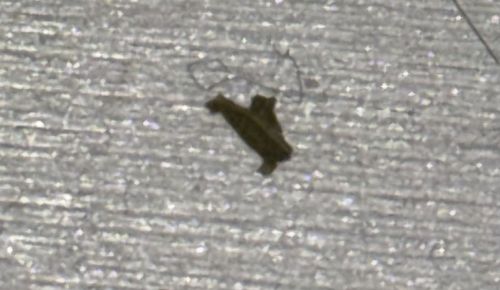Case-bearing Clothes Moth (Larva)
Scientific Name: Tinea pellionella
Order & Family: Lepidoptera, Tineidae
Size: Larvae: 10-14 mm (0.4-0.55 inches) when fully grown. Adults: Wingspan of 9-16 mm (0.35-0.63 inches).

Natural Habitat
Case-bearing clothes moth larvae are typically found indoors in dark, undisturbed areas such as closets, attics, storage areas, and under furniture. They prefer humid conditions and are often associated with textiles of animal origin.
Diet & Feeding
Keratin-containing materials, such as wool, fur, feathers, hair, felt, and other animal fibers. They can also feed on lint, dust, and decaying organic matter.
Behavior Patterns
Larvae construct a case out of silk and surrounding debris (like fabric fibers, lint, or hair), which they carry with them. They feed from within this case, enlarging it as they grow. Adults are short-lived and do not feed; their primary purpose is reproduction. They are typically weak flyers and are often found crawling.
Risks & Benefits
The primary risk associated with case-bearing clothes moth larvae is damage to textiles, especially those made from natural fibers like wool, silk, and fur. They can cause significant economic losses by damaging clothing, carpets, upholstered furniture, and museum collections. They are generally not a direct health risk to humans. There are no notable benefits to humans or the ecosystem from this pest.
Identified on: 8/29/2025